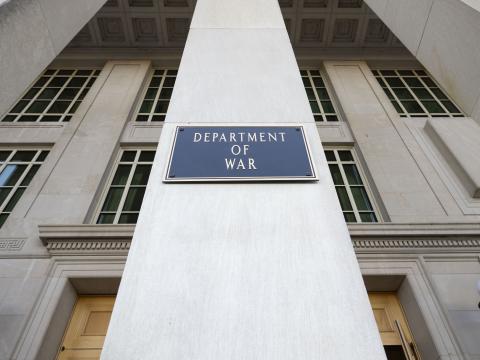Disruptive by Design: Med Tech and the DOD
Many experts have imagined a future in which the Department of Defense deploys an army of gadgets to track the health of individual warfighters in real time. However, most did not envision a global pandemic being the tipping point for the large-scale adoption of devices.
Many experts have imagined a future in which the Department of Defense deploys an army of gadgets to track the health of individual warfighters in real time. However, most did not envision a global pandemic being the tipping point for the large-scale adoption of devices.
As the world faces the coronavirus pandemic, leaders want to better understand the health of soldiers, Marines, airmen and sailors in real time, securely while maintaining some semblance of privacy. As leaders and program managers wrestle with decisions to employ these technologies, they must address information security, privacy and the need to know.
First and foremost, the information tracked, collated, and disseminated about the physical wellbeing of military personnel represents a high-security risk. Unit readiness levels are closely guarded military secrets. Aggregating this information provides new threat vectors for adversaries to exploit.
Leaders must compare the information security risks with the opportunities lost if these technologies are not deployed. Where the balance favors employing medical readiness tracking devices, information security officials must develop appropriate plans and bake security into the enterprise rather than simply demanding security of the devices themselves.
Another concern is the loss of confidentiality. Most in uniform understand that they give up many rights, including the right to always keep their wellbeing and whereabouts private. If one teammate’s medical readiness is degraded, job performance suffers, adversely affecting others.
Accordingly, leaders at all levels must monitor and report the health and welfare of their teams. Introducing technology to aid in this process, however, feels a bit like Big Brother is watching. While much of the civilian world has become comfortable sharing personal information, we need to better understand privacy rights in the ranks and the impacts of continuous monitoring on behavior and attitudes.
Writing a policy to protect privacy is one thing. Genuinely protecting privacy is another. Considering the day-to-day ways in which some may abuse or misuse medical monitors should be a first-order effort before creating any broad strategy to adopt wearable technologies or deploy environmental sensors.
Building on the concerns over information security and privacy, the Defense Department requires policies that outline who needs to know medical readiness information, at what level, and to what degree. Commanders and their senior enlisted advisors will rightly argue they should be the first to know. They are charged with preserving the health and welfare of those under their command. However, between these leaders and any service member is a chain of command. At each level, someone is responsible for the care and wellbeing of others. Furthermore, above any one commander sits another commander. Spillage within any link in this chain presents serious risks with harsh penalties due to federal health privacy measures.
The Defense Department already has solved the problem of managing sensitive information. Each of the services has developed systems and policies to distribute information regarding the abuse of powers, sexual assault, harassment and breakdowns in the equal treatment of others. While no information management system is perfect, the lessons learned from these programs should be considered as medical monitoring technologies unfold.
With the entire globe seeking new technologies to combat the coronavirus, widespread innovation in medical technologies will accelerate—as will calls by leaders to rapidly employ newly available measures. As leaders, policymakers and procurement officers rush to deliver solutions, now is the time to holistically address the associated security and privacy concerns associated with medical readiness tracking devices and systems. Leaders have argued for the value of such systems in future fights. Having access to this information, on a need-to-know basis, will likely aid military decision makers. However, crossing this threshold should be done cautiously and with a sober eye toward the Pandora’s box of second- and third-order challenges of introducing these devices within the ranks. Now is the time to use this crisis to develop enduring solutions for medical technologies in the Defense Department.
Maj. Ryan Kenny is an officer in the U.S. Army Signal Corps. He is a chief of staff of the Army-sponsored Advanced Strategic Planning and Policy Program Goodpaster Scholar. He is currently pursuing a doctorate within the Department of Engineering and Public Policy, Carnegie Mellon University, Pittsburgh, where his research focuses on policy issues concerning the employment of artificial intelligence in the U.S. Defense Department. The views expressed here are his alone and do not represent the views and opinions of the U.S. Defense Department, U.S. Army, or other organizations with which he has had an affiliation.
contact: Maj. Ryan Kenny, ryankenny@militarycommunicators.org




Comments